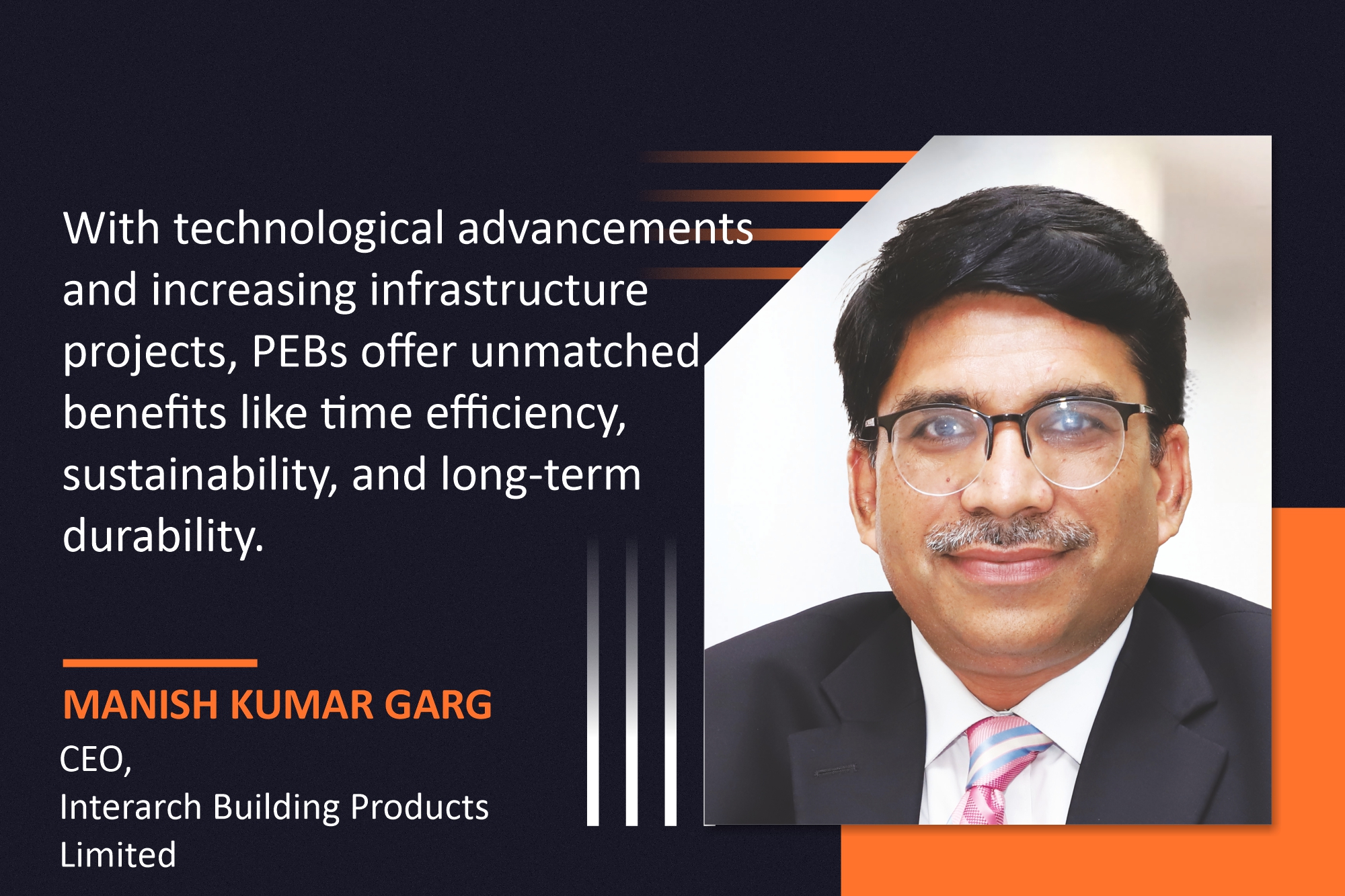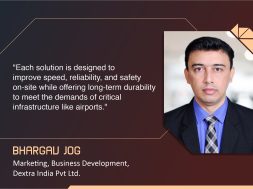Shift towards lightweight PEB solutions in modern construction

Pre-engineered buildings (PEBs) are becoming increasingly popular due to their sustainability and efficiency. This interaction looks at the elements that influence their demand, safety design principles, green building compliance, and developing lightweight alternatives.
What factors are driving demand for PEB structures, and how might industry trends and economic conditions affect it?
Various causes are fuelling the need for PEBs. The PLI (production-linked incentive), infrastructure projects, A-grade warehouses, data centres, and the government’s efforts to connect steel production and consumption with national steel policy drive demand for PEBs. Other reasons include the intrinsic benefits that PEBs provide, such as time savings, sustainability, and ease of construction.
What structural design principles and quality control processes ensure PEB structures’ long-term performance and safety?
The design is the most significant aspect. The professional engineers, assisted by world-class tools and bespoke design programmes, ensure the design is perfect for the first time. Using the most recent design codes is crucial; old codes should never be utilised. Quality control has been redefined as quality insurance, and we have improved the process of doing it right the first time. This ensures ZERO rework. The labour practices must ensure that the things produced are perfect the first time. However, as a double check, QC tests are performed on each member to ensure complete adherence to quality standards.

How suitable is PEB technology for earthquake-prone regions, and are there available earthquake-resistant designs for long-term safety?
Steel is an amazing material with a high strength-to-weight ratio. Steel’s malleable properties make it perfect for high seismic zones. Steel buildings are incredibly earthquake-resistant and can last for a long time.
In your view, are buildings constructed using PEB technology compliant with green building standards?
Steel is a recyclable material that can help you earn points for green building certification. Green building certification is based on a point system that considers various variables. As the major structural material, steel helps structures collect points, bringing them closer to green building certification.
What is the typical lifespan of a PEB structure, and how can these structures be efficiently recycled at the end of their lifecycle?
Steel buildings are permanent and, more importantly, do not require any maintenance like the Empire State Building, the Howrah Bridge, or several other steel structures. Steel buildings are demountable, meaning they may be demolished and repurposed once their useful life is up. This conserves landfill space while improving salvage value dramatically. Consider what the price of steel was 50 years ago. If a building built 50 years ago was demolished and the steel was sold to steel recycling facilities, the entire cost of the construction at the time would most likely be the same or higher.
What is your perspective on the growing trend of lightweight PEB solutions for construction projects?
Rooftop structures, plant offices, resorts, hotels, infill walls, site offices, and labour camps are all examples of lightweight steel buildings utilised in non-industrial applications. Institutions, etc. These are quickly catching up due to drywall construction.
For more details, visit: https://www.interarchbuildings.com/
Cookie Consent
We use cookies to personalize your experience. By continuing to visit this website you agree to our Terms & Conditions, Privacy Policy and Cookie Policy.










